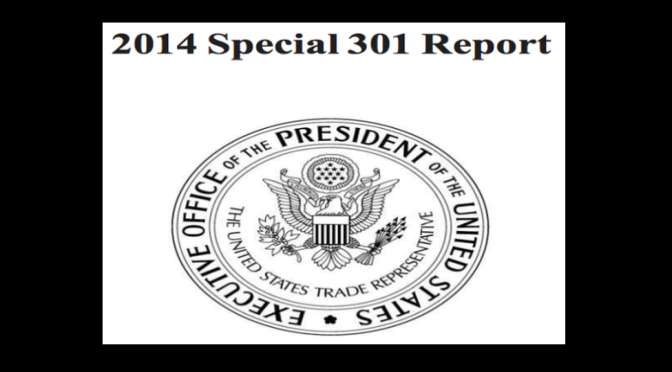This post was first published on 18th May, 2014.
The 25th Special 301 Report of 2014 keeps India on the Priority Watch List and the USTR hopes to run an out-of-cycle review in Fall, after the New Indian Government is formed. After emphasizing on the need to balance Incentives for Innovation and Domestic issues in India, the Report puts forth the various concerns on the Patent System in India:
Patent Process
Commending the measures taken by the Indian Government, such as Digitization, Online Search & e-Filing upgrades and Initiatives to hire Examiners, the Report focuses on the need for steps to clear the backlog of patent applications through proactive measures, technical collaboration with the USPTO and so on. The Report also raises concerns with respect to opposition grounds and processes, which result in costly and time-consuming challenge proceedings that carry on for years, which can go on to shorten the effective patent term and adversely affect investments/businesses.
Patentability
The Report emphasizes the need for India to endeavor to promote both cutting-edge innovation in order to address important health challenges, and a robust generic market. Speaking of the Novartis case, the Report points out that Section 3(d) sets a 2nd tier and higher threshold for patentability of chemical / pharmaceutical inventions, differentiating them from other classes of inventions. By requiring that a new form of a known substance must have enhanced efficacy, Section 3(d) excludes certain beneficial innovations such as drugs with fewer side effects, decreased toxicity, improved delivery systems, and temperature/storage stability, which requirement, according to the Report, is not beneficial for the country.
Compulsory Licensing
The Report urges that India provide greater transparency with respect to its ongoing inter-ministerial process, which process is considering over a dozen patented medicines as candidates for government-initiated Compulsory Licenses (CL), while also urging that opportunities must be given to the right holders before any decisions on such CLs were made. The Report also expresses concerns about the Bayer (Nexavar) CL decision of the IPAB with respect to the requirement of local working. Further expressing that local manufacturing was not required and that importing might be sufficient to meet the requirement of local working, the Report seeks clarity on how the requirement could be met without local manufacturing. Referring specifically to the National Manufacturing Policy of India, which mentions Compulsory Licensing as a tool for effective technology transfer in the clean energy sector, the Report expresses its concerns on India’s approach towards disseminating Green technologies.
Enforcement
The Report specifically talks about the inability of patent holders to get interim injunctions against infringers, from the Indian courts. Further, it highlights the lack of a link between patent holding and regulatory approvals. The Report also urges India to consider data exclusivity in the Pharma sector.
IP and Health Policy
In the Intellectual Property (IP) and Health Policy section, the Report states that an effective, transparent, and predictable IP system is necessary for both manufacturers of innovative medicines and generic medicines alike. Acknowledging the DOHA declaration and the US trading partners’ right to grant Compulsory Licenses in the interests of public health and access to medicine, and the impact of IP protection on prices, the Report encourages countries to consider ways to address their public health challenges while maintaining IPR systems that promote innovation.
Various developments have re-kindled the debate on Pharma patents at regular intervals and it is our wish, through numerous upcoming posts, to throw some light on the matter. Our focus, as mentioned earlier, will primarily be on two issues – Section 3(d) and Compulsory Licensing. With the objective of understanding the pith of the matter, we will delve into select submissions made to the USTR.
To begin, a post by Vinita Radhakrishnan will throw light on what Evergreening means and whether Section 3(d) actually does play a role in its prevention.
To know more about BananaIP’s IP Services, do visit us.



